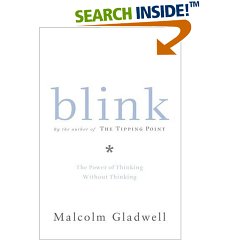Via Mediapost, originally
Dwell time, Schmell Time!
Unlike the Nielsen studies on various networks (who shall remain nameless) that have come out recently extolling the idea that consumers sit around for countless hours mindlessly watching that oh-so-engaging Digital Signage content that’s out there, some less partisan studies I’ve been privy to actually support the idea that SOME viewership habits on Digital Signage are more in line with a “glance medium” wherein 3-15 seconds is the most you’ll really get a consumer to be attracted to a display. Obviously this depends on the dwell time of the venue.
My view is that these times will go up as the content becomes more valid/relevant to the viewers but until the myriad of qualitative and quantitative studies on “What Content Works” get done, there’s a lot of guessing going on. In addition, until we learn to Entertain as much as we Inform, we’ll be hard pressed to really understand some of the significance of the numbers.
However, Having Elements of a Glance Medium are not a Bad Thing! (If it’s all true – which hasn’t been definitively proven 🙂 )
I’ve had some great little conversations with Steve Yetsko at Video Mining recently about the idea behind this and some of what they have revealed through their technology paired with the principles behind thought processes/theories like Blink: The Power of Thinking Without Thinking (Good book…oldie but a goldie from the same guy that wrote The Tipping Point.)
Video Mining can do eye-level tracking of audience behavior in front of a display (yes, they can track your eyes).
The principles behind Blink are basically, everyone makes decisions on products, dangers, services & innovation, etc. in 2 seconds. (Amazon link here)
Interesting little post over at mySA.com

(San Antonio News)
…on a new format of advertising they’re using from Clear Channel (and liking) on Fox Radio. Basically, the spots are 2 second renditions to catch the attention of viewers. As it states in the article, not everyone thinks they’re a good thing or even relevant, given how much you have to communicate in a commercial/ad.
I do, however think that “Adlets” could be a very relevant “addition” to many Networks out there as an ad format if used properly.
A good friend and advisor of mine is the ex-CEO of a major ad company and he’s getting a kick out of watching the Digital Signage business grow and adapt (as well as Media Agencies grow and learn). His major source of mirth is in comparing this medium to the “original” OOH business when it came about 30+ years ago.
According to my friend, Media Buyers and Brands scoffed at the idea of using Outdoor Advertising, literally commenting “Why would anyone want to advertise if it wasn’t in the home?” What the smart marketers eventually learned is that OOH was a great “follow on” medium, meaning it was a fantastic method to support the larger campaigns executed in TV and Radio Land and increasing the frequency of exposure across a campaign to get more impact. The early adopters got some great lift and punch/jump on their competitors.
Digital Signage IS a great follow on medium, even though it has some great tenants as a principle medium as well. If you read the article , Dennis McGuire, a media buyer for Carat, even reinforces this:
Still, McGuire said the spots, which sell for about ¼ the cost of a more traditional 60-second ad, are a good buy for advertisers looking to reinforce TV, print and existing radio messages.
“The whole idea is to use them to plant an idea in the head,” he said.
I think there’s a great 2-tier ad model inside Digital Signage in implementing various strategies, depending on the nature of the campaign at hand and buyer needs.
I’d actually love to work with some brands and some of the networks I work with to test this type of thing out!
Regardless, if we have elements of a glance medium through the various studies that have been done, then maybe a “Blink” approach should be tied into our outbound audience marketing.

September 4, 2007 at 2:00 am
Nice post 🙂
September 19, 2007 at 11:37 am
[…] Tumpbler, a study by Yahoo and OMD, on “Purchasing Paths” that are taken online and refer back to an older post on “Adlets” that I wrote on advertising spot […]
November 10, 2011 at 5:19 am
Free Ads Trade Free Classifieds classifieds , search and place free advertisements in Free Classifieds community listings posted by local Free Classifieds residents and nationwide visitors. Post free Trade ads in Free Classifieds , website for postin…
[…]“Adlets” for Digital Signage « >> Advertise Here![…]…
June 25, 2018 at 7:38 pm
I am really thankful to the holder of this website who has
shared this fantastic post at at this time.
August 12, 2021 at 9:21 am
practice focused dissertation
“Adlets” for Digital Signage | >> Advertise Here!
August 23, 2021 at 6:40 am
essays buy
“Adlets” for Digital Signage | >> Advertise Here!